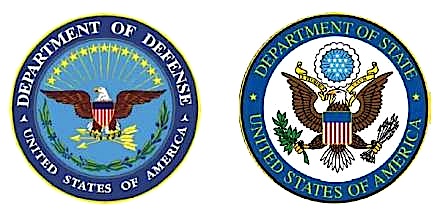Additional export controls are being considered for position, navigation, and timing (PNT) advances as well 13 other wide-ranging categories of technology. Among these categories are emerging disciplines like machine learning, robotics, object recognition and artificial intelligence that often incorporate PNT to support new applications in self-driving vehicles, drones, remote sensing and urban mobility.
The Bureau of Industry and Security (BIS) is in the process of writing a new rule on such emerging technologies and is asking for public feedback on the criteria for identifying those that are essential to U.S. national security. Such technologies, for example, may have the potential to improve conventional weapons, expand intelligence collection, enable weapons of mass destruction or have terrorist applications. They could also provide the United States with a qualitative military or intelligence advantage.
The agency also wants to better understand, among other issues, the status of development of these technologies and the impact specific controls could have on U.S. technological leadership.
BIS controls the export of dual-use and less sensitive military items through the Export Administration Regulations (EAR) including the Commerce Control List (CCL). Emerging technologies, however, may not be listed on the CCL, or controlled multilaterally, because their national security implications have yet to be evaluated.
The deadline to submit comments was recently extended to January 10. Comments can be submitted to regulations.gov under Docket BIS-2018-0024. More detailed information on this advance notice of proposed rulemakingcan be found here.
According to the website 65 comments have already been submitted though it appears not all have been posted. BIS is part of the Department of Commerce, which is being impacted by the partial government shutdown.
Many of those who posted their opinions said the U.S. would be disadvantaged if American researchers could not tap the expertise and resources in other countries.
“As a long-term participant in the technology industry and, most recently, a founder of a Silicon Valley startup based on artificial intelligence (AI), I believe this rule, as proposed, would have sweeping long-term negative impact on the competitiveness of the United States in key technologies areas, especially in AI,” wrote Chris Rowen, the CEO of BabbleLabs, Inc., in Campbell, Calif. The intent of the rule is to protect the United States’ national security and competitiveness, he said, “but it would have exactly the opposite effect.”
Rowen pointed out that controls could hamstring what is now a global web of development and manufacturing. “Most existing supply chains are cross-border with import and export of technology components forming an essential part of the efficiency and scale of the market. It would not be uncommon, for example, in the world of AI, to see algorithms conceived at a Canadian university, developed into a AI software module by a European company, trained on a compute server built in China using U.S. chips, implemented in a TV built in Korea, deployed on chips using a UK microprocessor design, running on an entertainment network operated in India.”
Rowen and others also pointed out that controlling the export of U.S. advances would not necessarily help the United States preserve an advantage.
“Discoveries that are ‘black boxed’ from one source are likely to emerge (often contemporaneously) elsewhere, likening enforceability to ‘whack-a-mole’, but with millions of moles,” wrote Lance Legel, an independent researcher who is also working on artificial intelligence (AI).
Though many of the comments referred to AI, the list of technology categories is quite a bit broader (see below) and the list could grow longer. Some commenters even suggested categories they felt BIS needed to add.
Representative Technology Categories
(1) Biotechnology, such as:
(i) Nanobiology;
(ii) Synthetic biology;
(iv) Genomic and genetic engineering; or
(v) Neurotech.
(2) Artificial intelligence (AI) and machine learning technology, such as:
(i) Neural networks and deep learning (e.g., brain modelling, time series prediction, classification);
(ii) Evolution and genetic computation (e.g., genetic algorithms, genetic programming);
(iii) Reinforcement learning;
(iv) Computer vision (e.g., object recognition, image understanding);
(v) Expert systems (e.g., decision support systems, teaching systems);
(vi) Speech and audio processing (e.g., speech recognition and production);
(vii) Natural language processing (e.g., machine translation);
(viii) Planning (e.g., scheduling, game playing);
(ix) Audio and video manipulation technologies (e.g., voice cloning, deepfakes);
(x) AI cloud technologies; or
(xi) AI chipsets.
(3) Position, Navigation, and Timing (PNT) technology.
(4) Microprocessor technology, such as:
(i) Systems-on-Chip (SoC); or
(ii) Stacked Memory on Chip.
(5) Advanced computing technology, such as:
(i) Memory-centric logic.
(6) Data analytics technology, such as:
(i) Visualization;
(ii) Automated analysis algorithms; or
(iii) Context-aware computing.
(7) Quantum information and sensing technology, such as
(i) Quantum computing;
(ii) Quantum encryption; or
(iii) Quantum sensing.
(8) Logistics technology, such as:
(i) Mobile electric power;
(ii) Modeling and simulation;
(iii) Total asset visibility; or
(iv) Distribution-based Logistics Systems (DBLS).
(9) Additive manufacturing (e.g., 3D printing);
(10) Robotics such as:
(i) Micro-drone and micro-robotic systems;
(ii) Swarming technology;
(iii) Self-assembling robots;
(iv) Molecular robotics;
(v) Robot compliers; or
(vi) Smart Dust.
(11) Brain-computer interfaces, such as
(i) Neural-controlled interfaces;
(ii) Mind-machine interfaces;
(iii) Direct neural interfaces; or
(iv) Brain-machine interfaces.
(12) Hypersonics, such as:
(i) Flight control algorithms;
(ii) Propulsion technologies;
(iii) Thermal protection systems; or
(iv) Specialized materials (for structures, sensors, etc.).
(13) Advanced Materials, such as:
(i) Adaptive camouflage;
(ii) Functional textiles (e.g., advanced fiber and fabric technology); or
(iii) Biomaterials.
(14) Advanced surveillance technologies, such as: Faceprint and voiceprint technologies.
Many of those who wrote to BIS were concerned, however, with the possibility that new controls would slow American progress by limiting U.S. access to advances in other countries — all while not really solving the problem.
“While the intent is well meaning and understood,” wrote commenter Alan Colegrove, “the U.S. does not possess a monopoly on advancements in the proposed areas. If the topic is truly ITAR related, control it under ITAR. Otherwise, do not restrict U.S. businesses attempting to collaborate with foreign sources.”






